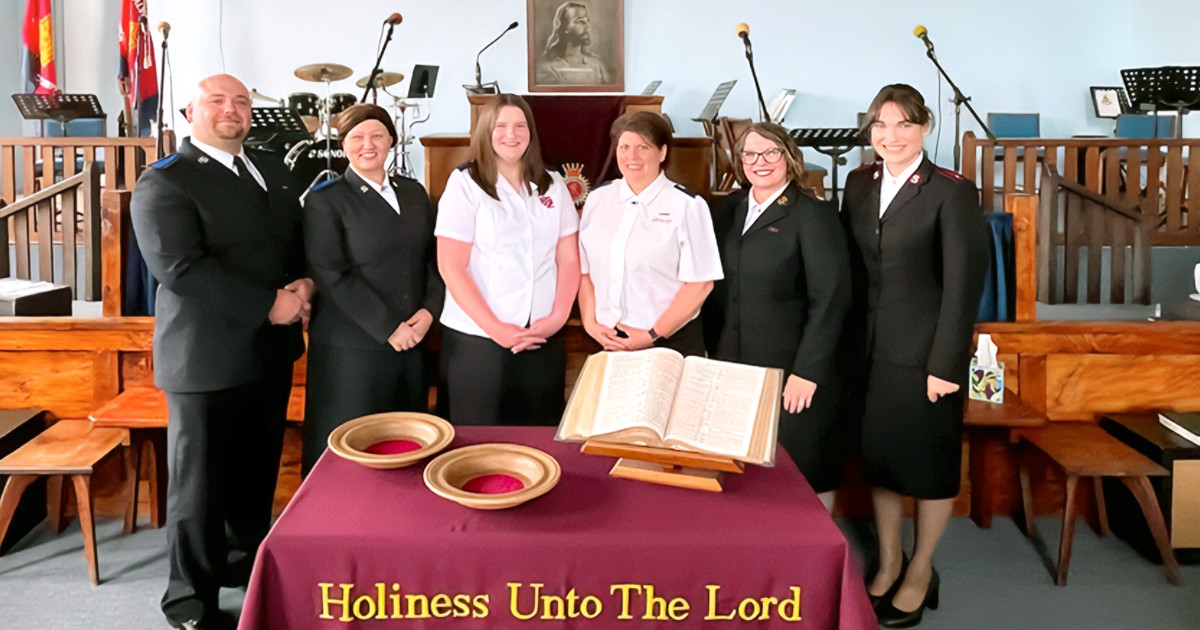There’s nothing better than working with an engaged team that goes above and beyond what is expected—there seems to be no limit to what can be achieved. It’s as if the engagement is contagious and the result is more than simply the sum of the individual components. One might even make the case that success grows exponentially.
The question for a leader is, “How do I build a sense of engagement? How do I create an environment that will result in everyone feeling valued and dedicated?”
In the October issue of Salvationist, we introduced the LEADS framework (visit salvationist.ca/leads) and began a series exploring each of the five capability domains. In this issue, we will take a closer look at ENGAGE OTHERS: leaders who engage others foster the development of others, communicate effectively, contribute to the creation of healthy organizations and build teams.
Last September, Captain Kim Chan, divisional secretary for business administration in the Maritime Division, was invited to speak at the annual senior band retreat for St. John’s Citadel, N.L. Here, she shares her experience using ENGAGE OTHERS during her weekend with the band:
The bandmaster requested that I focus my time with the band around unity, and the LEADS framework immediately came to mind. The components of this domain emphasize the importance of teamwork to effectively and efficiently accomplish ministry goals.
I divided the band members into groups and gave each group a Lego set. Then I asked each group to function as a different type of team—a basketball team, bowling team, surgical team and an orchestra—while they put together the Lego. How would each team approach the task?
A basketball team works together, combining individual skill and talent to produce a product greater than the sum of its parts. This is also true of an orchestra, and in both cases there is a leader/coach whose role is to create a better whole.
This is very different than a surgical team, in which the leader provides specific directions and calls on each member of the team to contribute their expertise at particular moments in time. They may be asked to work together, as well as provide feedback, but they are at the command of the team leader.
The bowling team has another dynamic. Each player simply takes a turn, and has nothing more to do than cheer when their teammates are participating.
After the exercise, each team shared whether they were able to complete the task, and the moments of collaboration and frustration in the process. When team members were asked to switch roles or join a team that functioned differently, the consequences were significant. When a team worked well together, it was based on their knowledge of each individual role, but also how each member completed the team.
This relatively simple activity, used as a tool to demonstrate the importance of the ENGAGE OTHERS domain, asks participants to consider individual strengths while being part of a team. It also helps to demonstrate the need to foster collaboration within a group.
I will continue to use the LEADS framework and the tools from the LEADS learning series as a way to develop leaders when such opportunities arise.
Creating an environment of high engagement is an important requirement for those in leadership. All types of teams can be successful, and different teams are needed at different times. We must pay attention to the characteristics of the various groups we are trying to lead, and ensure that all members are engaged. Sharing vision and clarifying goals that align with our mission and strategy help to engage others and build the organization not only locally, but also at the territorial level.
Paul Carew is the leadership development secretary. Captain Kim Chan is the divisional secretary for business administration in the Maritime Division.
Photo: STUDIO GRAND WEB/stock.Adobe.com
The question for a leader is, “How do I build a sense of engagement? How do I create an environment that will result in everyone feeling valued and dedicated?”
In the October issue of Salvationist, we introduced the LEADS framework (visit salvationist.ca/leads) and began a series exploring each of the five capability domains. In this issue, we will take a closer look at ENGAGE OTHERS: leaders who engage others foster the development of others, communicate effectively, contribute to the creation of healthy organizations and build teams.
Last September, Captain Kim Chan, divisional secretary for business administration in the Maritime Division, was invited to speak at the annual senior band retreat for St. John’s Citadel, N.L. Here, she shares her experience using ENGAGE OTHERS during her weekend with the band:
The bandmaster requested that I focus my time with the band around unity, and the LEADS framework immediately came to mind. The components of this domain emphasize the importance of teamwork to effectively and efficiently accomplish ministry goals.
I divided the band members into groups and gave each group a Lego set. Then I asked each group to function as a different type of team—a basketball team, bowling team, surgical team and an orchestra—while they put together the Lego. How would each team approach the task?
A basketball team works together, combining individual skill and talent to produce a product greater than the sum of its parts. This is also true of an orchestra, and in both cases there is a leader/coach whose role is to create a better whole.
This is very different than a surgical team, in which the leader provides specific directions and calls on each member of the team to contribute their expertise at particular moments in time. They may be asked to work together, as well as provide feedback, but they are at the command of the team leader.
The bowling team has another dynamic. Each player simply takes a turn, and has nothing more to do than cheer when their teammates are participating.
After the exercise, each team shared whether they were able to complete the task, and the moments of collaboration and frustration in the process. When team members were asked to switch roles or join a team that functioned differently, the consequences were significant. When a team worked well together, it was based on their knowledge of each individual role, but also how each member completed the team.
This relatively simple activity, used as a tool to demonstrate the importance of the ENGAGE OTHERS domain, asks participants to consider individual strengths while being part of a team. It also helps to demonstrate the need to foster collaboration within a group.
I will continue to use the LEADS framework and the tools from the LEADS learning series as a way to develop leaders when such opportunities arise.
Creating an environment of high engagement is an important requirement for those in leadership. All types of teams can be successful, and different teams are needed at different times. We must pay attention to the characteristics of the various groups we are trying to lead, and ensure that all members are engaged. Sharing vision and clarifying goals that align with our mission and strategy help to engage others and build the organization not only locally, but also at the territorial level.
Paul Carew is the leadership development secretary. Captain Kim Chan is the divisional secretary for business administration in the Maritime Division.
Photo: STUDIO GRAND WEB/stock.Adobe.com










Leave a Comment